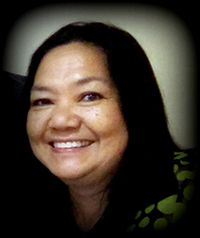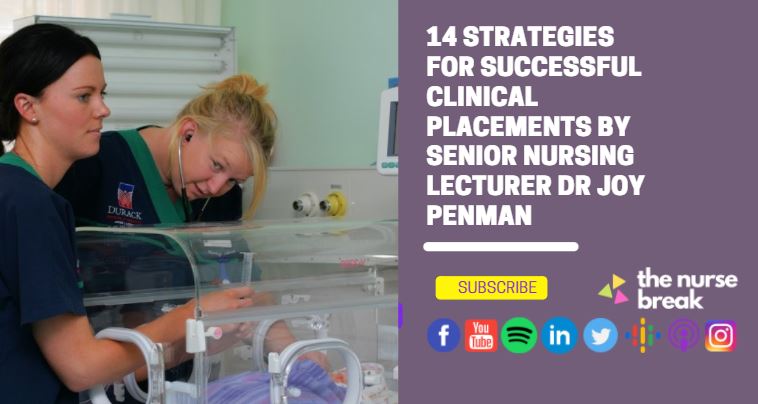Table of Contents
Clinical Placements Guide by Senior Nursing Lecturer Dr Joy Penman
Dr Joy Penman holds a Bachelor and Master’s degrees in Nursing and Pharmacy. She completed her doctoral studies in Nursing. Joy is a senior lecturer and teaches at Monash Nursing and Midwifery. She has over thirty years teaching experience locally and abroad and many years nursing experience in various health care facilities.

Some other articles you will enjoy
- For a comprehensive and systematic approach to assessment in ICU, read THIS POST
- For a guide to placement/grad year on a cardiac / cardiothoracics ward + free worksheet on cardiac pharmacology and main cardiac issues go HERE
- Cheat-sheet guide for your ICU nursing placement HERE
- Introduction to Cardiac Nursing Basics for nursing students
- The ultimate nursing guide to sepsis
- A cheat-sheet guide for your cardiac nursing placement
- The helpful complete guide to an Aged Care Nursing Placement for students
- 14 strategies for successful clinical placements
- Untangling nursing communication – “My patient can’t talk to me… Help!”
- Step-by-step explanation of nursing CPD
- Helpful list of proven graduate nurse tips!
- You MUST know about ACT-PINCHES (N) drugs
NURSING IS RELATIONAL, MORE THAN PERFORMANCE-BASED
After many years of teaching, supervising directly or indirectly students during placement, and listening closely to them, I have formulated my strategies for successful clinical placements. I refer to them as ‘golden nuggets’ because they encapsulate the lessons learned through the reflections and experiences of my students, which I interpreted and synthesised. When reading the tips, please bear in mind that nursing is relational, more than performance-based. Hard-work is good but it not enough, relationships are crucial.
Here it goes:
For an infographic version: download here
1) Be prepared
Come with clear objectives for the day and work towards completing them.
2) Be knowledgeable
Revise on conditions, medications, care plans etc. Look up new information and answers to questions.
3) Be involved and focused
Apply yourself and find every opportunity to learn and expand your understanding. (Don’t just stand around.)
4) Be helpful
Find opportunities to help patients and co-nurses. Ask others how you could help. Be a team player.
5) Be teachable and humble
Welcome instructions, corrections and criticisms. There is much to learn and consider all these as opportunities to grow as a nurse.
6) Be positive and cheerful
Everybody likes to work with positive and cheerful individuals. Also, count the good stuff that happens during the shift.
7) Be communicative
Tell others you wish to learn, communicate your willingness to assist, ask questions, and contribute and practise your skills.
8) Be reflective
Reflect on your strengths and limitations. Enhance your positive personal traits and work on areas of weakness.
9) Be flexible and adaptable
Remember that change is part of living, and so the key to being a resilient nurse is being able to adapt to change.
10) Be sociable
Keep family close, make friends, and maintain social networks. Greet people at work, and eat with your workmates. Attend those socials.
11) Be healthy
Your health is a protective factor at work. It is essential that you have good physical and mental health.
12) Be polished and well-groomed
Looking and smelling the part will boost confidence and self-esteem.
13) Be able to self-manage
You need to develop and expand your own coping skills and strategies. When not working, engage in things that make you happy!
14) Be resilient
Foster resilience by understanding yourself, setting goals, moving towards the goals, taking-action, building relationships, making connections, being positive and reflective, forgiving, having faith, and willing to bounce back after a set-back.
As nurses, we can positively impact the lives of people. What an awesome job we have!
Wishing you an enjoyable and informative clinical placement!
Dr Joy Penman
For more By Dr Penman go here!






You must be logged in to post a comment.